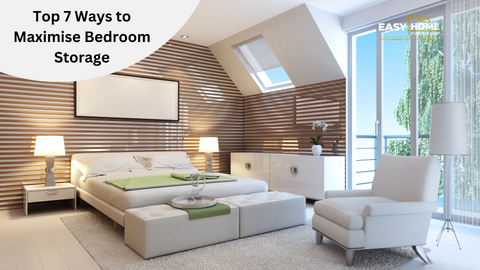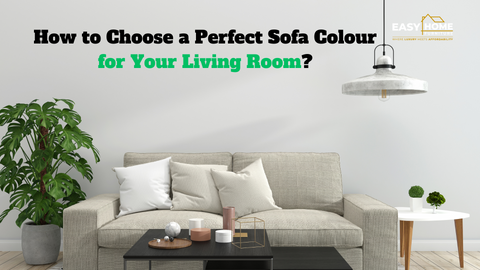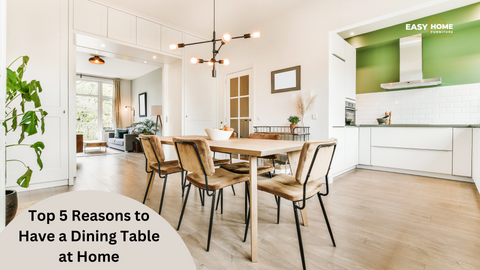Choosing the right furniture for your child's bedroom goes way beyond just picking out colours and styles. It’s really about building a safe, practical, and inspiring little world where they can grow, play, and dream. This guide is here to walk you through it, turning what can feel like a huge task into an exciting creative project.
Your Starting Point for a Perfect Kids' Room
Let's treat this as the foundation for creating a room that works just as well for quiet story times as it does for boisterous play dates. We'll cover everything from must-have safety features to making your budget work, helping you make choices that are a smart investment in both your child’s happiness and your own peace of mind.
Picking out furniture for a kid's room can feel like a massive responsibility, can't it? You’re not just buying a bed or a set of drawers; you're creating the backdrop for their entire childhood. It’s where they’ll rest, imagine, and learn. That’s why every piece needs to be more than just good-looking—it has to be safe, tough, and ready for anything.
Foundational Principles of Kids' Furniture
Before you even start browsing, it helps to get your head around a few core principles. These are the non-negotiables that will steer you towards furniture that’s genuinely great, not just good enough.
-
Safety First, Always: This is the absolute number one priority. Always look for furniture with rounded corners, non-toxic paint and finishes, and a solid, sturdy build. Any tall items, like bookcases or chests of drawers, must come with anti-tip kits so you can anchor them securely to the wall.
-
Durability for the Long Haul: Let's be honest, kids are not gentle. Furniture made from solid wood or high-quality engineered wood is your best bet for surviving everything from crayon masterpieces to teenage life. It’s built to last.
-
Functionality That Adapts: The smartest furniture choices are the ones that grow with your child. Think of convertible cots that transform into toddler beds, or desks with adjustable heights. These pieces offer fantastic value over the years.
A child’s room is their sanctuary, a personal world where they feel secure and free to be themselves. The right furniture doesn't just fill the space; it helps create that feeling of safety and belonging.
This guide will dive deeper into each of these areas, exploring materials, clever storage ideas, and smart budgeting. Once you've got these fundamentals sorted, you can confidently build a bedroom that's both beautiful and built for real life.
For a little extra creative spark on pulling the whole look together, check out these 10 amazing tips to decorate your kid's bedroom.
Now, let's kick things off by looking at the most important element of all: safety.
Prioritising Safety in Your Furniture Choices

When you’re putting together a bedroom for your child, safety isn’t just another box to tick. It’s the absolute foundation for everything else. Think of it like building a house—you wouldn’t be fussing over paint colours before you know for sure the walls are solid. The same principle holds true when you're choosing their furniture.
So, before you fall head over heels for a particular style or colour scheme, it’s vital to look at every single piece through a safety-first lens. It’s all about learning to spot the potential hazards that might not be obvious at first glance.
This mindset is something parents everywhere are adopting. The global market for kids' bedroom furniture was valued at USD 6.5 billion recently and is projected to climb to USD 9.2 billion by 2033. A huge driver of this growth is a greater focus from parents on their children's comfort and, most importantly, their safety.
Mitigating Tip-Over Risks
One of the scariest and most easily overlooked dangers in a child’s room is furniture toppling over. Tall or heavy pieces like chests of drawers, bookshelves, and wardrobes can become incredibly dangerous, especially when you have a curious little climber in the house.
It only takes a few seconds for a child to be seriously injured by a falling piece of furniture. That's why anchoring furniture to the wall isn't just a suggestion—it's an absolute must.
Here are the key stability features to look for:
- Anti-Tip Kits: Any good furniture manufacturer will include the hardware you need to securely anchor tall items to the wall. If a kit isn't in the box, they are cheap and easy to find at any hardware store.
- Wide and Low Profile: As a general rule, furniture that's lower to the ground with a wider base is far more stable. Think lowboys instead of tallboys.
- Drawer Interlocks: Some dressers come with a smart mechanism that only lets you open one drawer at a time. This simple feature stops the unit from becoming top-heavy and tipping when multiple drawers are pulled out.
The Importance of Smooth Edges and Surfaces
In a room built for play, sharp corners and rough edges are just accidents waiting to happen. It helps to think of furniture with rounded corners as the soft bumpers of the room—they can turn what could have been a nasty bump into a minor "oops."
Always run your hands along the edges and surfaces of any piece you’re considering. They should feel completely smooth, with no splinters, sharp points, or bits of hardware like screws or nails sticking out. This is especially crucial for things they’ll be using every day, like their bed frame, play table, and chairs.
A truly safe room is one where a child can move and play freely without the parent constantly worrying about sharp corners or unstable furniture. It's about creating an environment of 'yes' where exploration is encouraged because the space itself is designed to be forgiving.
Decoding Finishes for a Healthy Environment
What your furniture is coated with is just as important as what it's made from. You want your child's space to be free from harmful chemicals, which can often be found lurking in paints, stains, and varnishes. These chemicals can "off-gas" into the air, affecting the quality of the air they breathe.
When you're checking out furniture finishes, here’s what to keep an eye out for:
- Non-Toxic Labels: Make sure any paints and finishes are clearly labelled "non-toxic" and are certified as safe for use on children's products.
- Low or Zero VOCs: Look for items made with low or zero Volatile Organic Compounds (VOCs). These are chemicals that can leach into the air and are common in many paints, glues, and finishes.
- Lead-Free Confirmation: While lead-based paint has been banned for residential use in Australia for decades, it’s always smart to double-check that any furniture, especially if it’s imported or a vintage find, is confirmed to be lead-free.
Thinking beyond the furniture's physical structure to the air your child breathes is a key part of the puzzle. For a deeper dive, there are great resources on creating healthy air environments for children. By focusing on these three safety pillars—stability, smooth design, and non-toxic materials—you can be confident that their furniture is not just functional, but a truly safe part of their personal haven.
Choosing Materials That Can Survive Childhood
Let's be honest, kids' furniture has a tough life. A bed isn't just for sleeping—it's a trampoline, a fort, and a spaceship. A dresser is a mountain to be scaled, and a desk is often a canvas for rogue crayons. This is why the material you choose is so critical; it dictates how well each piece will stand up to the beautiful chaos of childhood.
Think of it like choosing a winter coat. A light windcheater won't cut it in a blizzard, and similarly, a delicate material won't last long against years of energetic play. You need something built for the job.
The right materials often go hand-in-hand with smart design, creating spaces that are both durable and practical.

As you can see, clever storage solutions are often built from these robust materials, helping to maximise floor space for all that important play.
The Gold Standard: Solid Wood
When you want something that will last, and I mean really last, solid wood is the champion. Timbers like pine, oak, and maple are incredibly strong and actually look better with a bit of age. Their superpower? They can be sanded down and refinished. That means the inevitable dings, scratches, and marker stains can literally be erased, making the piece look brand new again.
Sure, the price tag is higher upfront, but think of it as a one-time purchase. A well-built wooden dresser or bed can see your child through to their teens and could even be passed down one day. That’s real value.
A Smart Alternative: Engineered Wood
Engineered woods, like Medium-Density Fibreboard (MDF) and particleboard, are the go-to for many parents because they're affordable and incredibly versatile. MDF is made by pressing wood fibres together with resin, creating a super-smooth surface that’s perfect for paint. This is how you get those flawless, colourful finishes you see on so many modern kids' furniture pieces.
But you have to know their limits. Engineered wood isn't as tough as its solid counterpart and doesn't handle spills or moisture well. Once it’s deeply scratched or chipped, there’s no sanding it back. For items that won't see a lot of rough-and-tumble action, like a bookshelf, MDF is a brilliant, budget-friendly choice.
Expert Tip: If you're going with engineered wood, look for a high-quality laminate or veneer finish. This outer layer is its armour, giving it a much-needed defence against scuffs, spills, and daily wear.
Modern and Practical: Metal and Plastic
Metal furniture, usually steel or aluminium, brings a cool, industrial vibe to a kid's room. It's ridiculously strong, lasts forever, and is a breeze to clean. Metal bed frames are fantastic because their simple, sturdy design can easily adapt as your child's tastes evolve from dinosaurs to pop stars.
Plastic is another great option, especially for the little ones. It's light, cheap, and comes in every bright, happy colour imaginable. While it might not be the best choice for a bed frame, it's perfect for play tables, chairs, and storage tubs that need to be wiped down constantly and moved around with ease.
It's also worth noting that today's parents are thinking more about the planet. There's a growing demand for sustainable materials like renewable wood and finishes with low VOCs (Volatile Organic Compounds). This trend reflects a broader shift in consumer values, and you can see more about how these preferences are shaping the Australian furniture market, which also highlights a desire for unique, personalised spaces for kids.
Understanding Furniture Finishes
The finish isn't just about looks; it's the furniture's first line of defence.
- Paint: Gives you endless colour possibilities with a solid, even look. Just make sure it's certified non-toxic and low-VOC for your peace of mind.
- Stain: Soaks into the wood itself, highlighting the natural beauty of the grain. It offers a classic look but provides less surface protection against scrapes.
- Laminate: A tough, synthetic layer glued over engineered wood. It's your best friend for resisting scratches and stains, making clean-up after "art projects" a simple wipe-down.
Smart Storage Solutions for a Clutter-Free Space
A well-organised bedroom gives a child the mental and physical space they need to let their imagination run wild. But clever storage is about more than just keeping things tidy; it empowers your child by teaching them responsibility and giving them the independence to manage their own belongings. When everything has a home, cleanup becomes a simple part of the daily routine instead of a dreaded chore.
The secret is to think beyond basic plastic tubs and embrace furniture that does double duty. In a kid's room, especially a small one, multifunctional pieces are your most valuable allies. They're designed to contain the chaos while freeing up precious floor space, which ultimately means more room to play.
It's an approach that's catching on. The global market for kids' storage furniture is booming, projected to grow from USD 18.64 billion in 2025 to an incredible USD 94.37 billion by 2035. This massive jump shows just how much parents are looking for smart, space-saving solutions that are both practical and safe for kids. You can dive deeper into these market trends in kids' storage furniture to see how families worldwide are making organisation a priority.
Make Your Furniture Work Harder
Often, the best storage solutions are hiding in plain sight, built right into the furniture you already need. This isn't just a great space-saving trick; it also keeps everyday items right where you need them.
- Beds with Built-in Drawers: Under-bed storage is an absolute game-changer. It’s the perfect spot to stash extra blankets, out-of-season clothes, or those bulky toys that never seem to fit anywhere else. Look for options with deep, smooth-gliding drawers that are easy enough for little hands to manage.
- Storage Headboards: Many bed frames now come with shelving built into the headboard. This creates a neat little nook for bedtime stories, a night light, or their favourite little treasures.
- Ottomans with Hidden Compartments: A soft ottoman isn't just a comfy seat for reading. It can also be a secret toy box, ideal for hiding away everything from dress-up costumes to Lego bricks.
Design for Accessibility and Independence
For any storage system to actually work, kids have to be able to use it themselves. When you design with accessibility in mind, you encourage them to take an active role in keeping their room tidy, which builds their confidence.
An organised space is more than just clean—it's empowering. When a child knows where their things belong and can put them away independently, they gain a sense of control and accomplishment over their own environment.
Here are a few child-friendly ideas to consider:
- Low, Open Shelving: Cubby-style units with fabric bins are fantastic. They let kids see all their toys, making it easy to grab what they want to play with—and, just as importantly, put it back when they're finished.
- Forward-Facing Bookcases: Traditional bookshelves can be tough for little ones to navigate. A slim, wall-mounted display that shows the front covers of books is far more inviting and helps them easily spot their favourite story.
- Hooks at Their Height: A few simple wall hooks installed at a child-friendly height are perfect for hanging jackets, school bags, and superhero capes, keeping them from ending up in a pile on the floor. For more great tips, check out our guide on the top 7 ways to maximise bedroom storage.
By choosing furniture that blends smart function with accessible design, you can create a clutter-free room that not only looks great but also actively supports your child’s development.
Selecting Furniture That Grows with Your Child
Kids grow up in the blink of an eye, and their tastes change just as fast. One minute they're mad about dinosaurs, the next it's all about astronauts and outer space. It's fun to follow their passions, but replacing their bedroom furniture every few years is not just expensive, it's also incredibly impractical.
The smarter way to approach this is to think of their furniture as a long-term investment. By choosing adaptable pieces, you can build a stable, familiar foundation for their room that evolves right alongside them. This isn't just about saving money; it's about creating a cherished space that lasts throughout their childhood.
The Power of Convertible Furniture
The real hero in a future-proof kid's room is convertible furniture. These are the clever, multi-tasking pieces designed to physically transform as your child hits new milestones. Think of it as the Swiss Army knife of the bedroom—one purchase that solves several problems over many years.
The classic example, and a true champion of adaptability, is the convertible cot.
- Stage 1 Cot: It starts life as a safe, secure sleeping space for an infant, with high rails for total peace of mind.
- Stage 2 Toddler Bed: Once your little one starts climbing, you can remove one side and add a low safety rail, turning it into the perfect first "big kid" bed.
- Stage 3 Daybed or Headboard: Down the track, many models convert again into a small daybed for reading or even become the headboard for their first single bed. It’s a brilliant way to get maximum value from one piece of furniture.
Choosing adaptable furniture isn't just a budget-friendly move; it's an investment in consistency and comfort for your child. Familiar pieces provide a sense of security as they grow and their world changes.
This idea goes well beyond cots. Look for study desks with adjustable legs that can be raised as your child gets taller, making sure they always have a comfortable spot for homework. Adjustable chairs are another fantastic find, supporting them from their first scribbles right through to their high school study sessions.
Timeless Designs and Neutral Palettes
Another crucial piece of the puzzle is choosing furniture with timeless appeal. A race car bed might seem like a dream come true for your five-year-old, but its charm will probably wear off before they turn eight. A much better approach is to opt for simple, classic designs that won't look dated in a few years.
Here’s how to choose designs with staying power:
- Embrace Clean Lines: Furniture with simple, uncluttered shapes offers the most versatility and won't go out of style.
- Choose Neutral Finishes: Stick to finishes like natural wood, classic white, or soft grey for the big-ticket items like the bed and dresser. These colours are a perfect blank canvas.
- Prioritise Quality Materials: A solid wood dresser will outlast fleeting trends and withstand years of wear and tear far better than a themed, lower-quality piece.
By keeping the core furniture neutral, you give yourself the freedom to change the room's theme easily and affordably. You can completely transform the space just by swapping out accessories like bedding, curtains, wall art, and rugs. This lets you celebrate your child's latest obsession without committing to expensive furniture they'll soon outgrow. A bit of foresight now on how to pick the right bed frame for your bedroom can genuinely save you from buying another one in just a few short years.
How To Budget for Quality and Longevity

Creating a fantastic kids' room that’s safe, stylish, and built to last doesn't have to mean emptying your savings account. The trick is to be clever with your budget. It’s all about knowing where to invest for the long term and where you can save a bit without compromising on the important stuff.
Think of it like planning a family road trip. You'll spend good money on reliable tyres and a proper service because safety is paramount, but you might pack your own lunches to save on costs along the way. Applying that same logic to furniture means putting your dollars into the core pieces that absolutely must be durable and safe.
The Invest vs. Save Strategy
At the heart of any smart furniture budget is a simple principle: know which items are worth the investment and which can be more affordable, trend-driven pieces. This approach ensures your money is working its hardest to build a quality foundation that will see your child through many years.
Your biggest investment should almost always be the bed frame. It’s the hero of the room, enduring everything from peaceful sleep to weekend pillow fights. A well-built frame made from solid wood is a purchase you won't regret, as it can easily last a decade or more.
On the flip side, here’s where you can afford to be a bit more thrifty:
- Bookcases: As long as it’s safely anchored to the wall, a simple, budget-friendly bookshelf will do the job just as well as a designer one.
- Themed Décor: Things like dinosaur-print bedding, fairy-light curtains, and colourful wall decals are fun but fleeting. It’s much easier (and cheaper) to swap these out as your child's tastes evolve.
- Play Tables and Chairs: These little tables are magnets for crayon scribbles, paint spills, and general chaos. An inexpensive, easily replaceable option is often the most sensible choice here.
A well-planned budget isn’t about being restrictive; it’s about being empowered. It lets you make smart choices, giving you the freedom to create a beautiful space by focusing your spending where it delivers the most value.
How To Spot Quality at Any Price Point
Whether you're browsing a high-end showroom or hunting for a bargain on Facebook Marketplace, developing an eye for good craftsmanship is your secret weapon. This skill helps you find those hidden gems and steer clear of poorly made items, no matter the price. The fundamentals of what makes furniture sturdy and reliable are universal, much like the principles for how to choose the perfect furniture for your living room.
When you’re looking at a piece, give it a quick hands-on inspection. Pay attention to these tell-tale signs:
- Check the Drawers: Don't just look at them—pull one out. The gold standard is dovetail joints, which lock together for incredible strength. If you see just staples or a thin line of glue, it’s a red flag.
- Give It a Wobble: Gently push on the corners of a dresser or bookcase. Does it sway or creak? A quality piece will feel solid and stable, indicating strong, well-fitted joints.
- Inspect the Finish: Run your hand over the surface. A quality finish feels smooth and even, and it does more than just look good—it protects the wood from spills, scratches, and everyday wear.
By keeping an eye out for these simple markers of quality, you can confidently furnish a room that’s both durable and stylish, all while staying right on budget.
Frequently Asked Questions
It's completely normal to have a long list of questions when you're wading through the world of kids' furniture. Let's tackle some of the most common ones that parents ask, so you can feel confident you're making the right choices for your little one's room.
What Is the Best Material for Kids Furniture?
When it comes to durability, you really can't go past solid wood like pine or maple. It’s tough enough to withstand years of play, and let’s be honest, a bit of rough and tumble. The best part? If it gets a few battle scars from crayons or scratches, you can always sand it back and refinish it.
If your budget is a bit tighter, a high-quality engineered wood (MDF) is a fantastic alternative. Just make sure it has a non-toxic, low-VOC finish. This gives you a smooth, easy-to-clean surface and opens up a huge range of colours and styles to suit any theme.
When Should My Child Move from a Cot to a Bed?
Most toddlers are ready to make the big move from a cot to a bed somewhere between 18 months and 3 years old. The clearest sign it's time for a change is a safety one: if your little adventurer is trying to climb out of their cot, it's no longer a safe space for them.
You might also notice they’re getting too tall for the cot, or they might just start asking for a "big kid" bed. A toddler bed or a single bed with some good guardrails is the perfect next step to prevent any accidental tumbles in the middle of the night. If you're looking for answers on other household items, you can find further FAQs on home product queries.
What Are the Most Important Furniture Safety Features?
When you’re checking furniture for safety, there are three main things to keep on your radar: stability, safe materials, and clever design.
The absolute number one safety feature is stability. Any tall pieces like chests of drawers or bookshelves must be anchored securely to the wall with anti-tip kits. This is non-negotiable and prevents dangerous toppling accidents.
Beyond that, always double-check that any paints or finishes are labelled as non-toxic, lead-free, and low-VOC. This helps keep the air in their room clean and healthy. And finally, look for furniture with rounded corners and smooth edges—it’s a simple design choice that can save a lot of bumps and scrapes during playtime.
Have a few more questions on your mind? We've put together a dedicated page to help. You can find more answers in our own Frequently Asked Questions.
At DLB Furniture, we have a wide range of safe, durable, and stylish kids' bedroom furniture that’s designed to grow right alongside your child. Explore our collection today and start building the perfect space for them to dream and play. Visit us at https://dlbfurniture.com.au.










